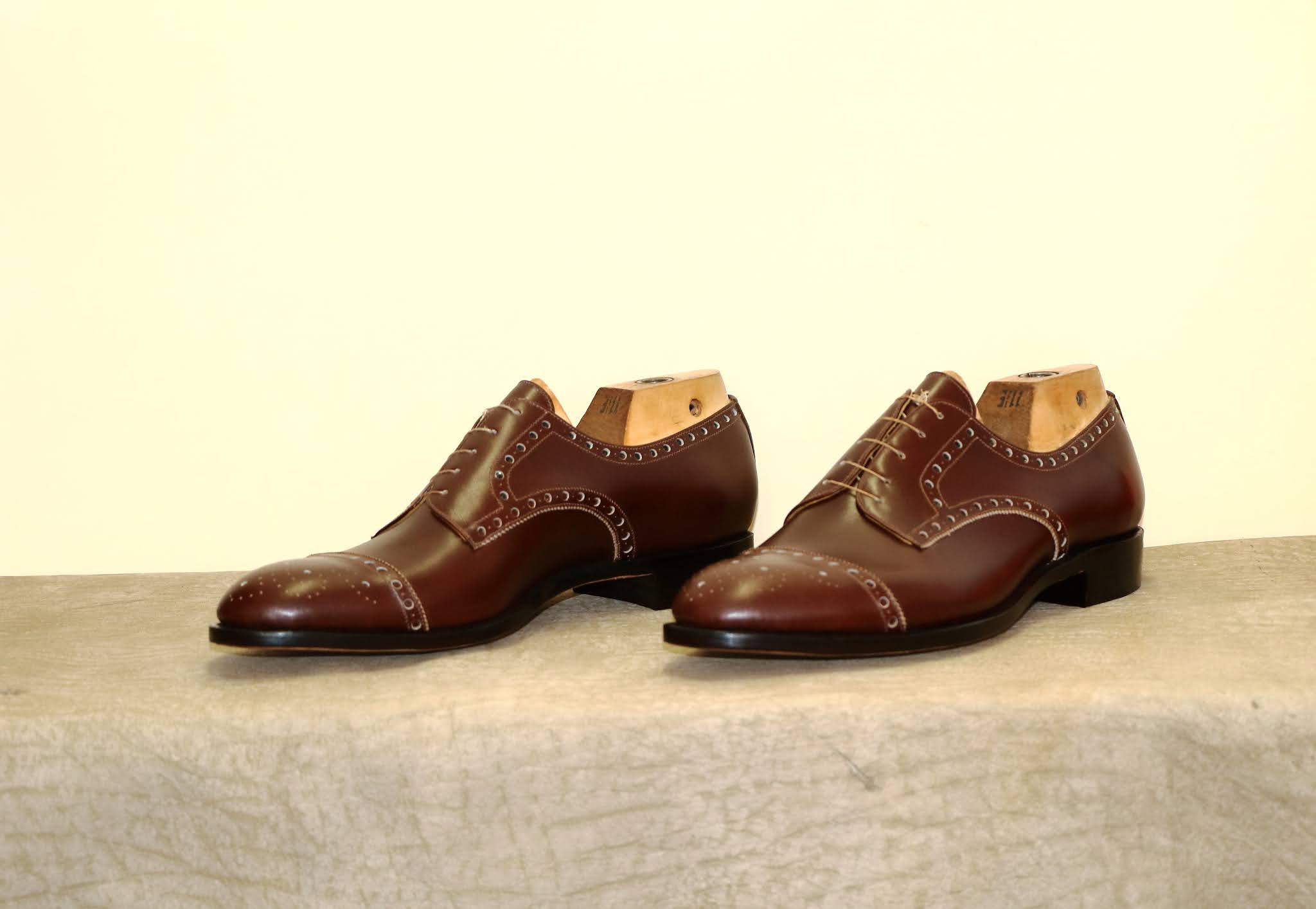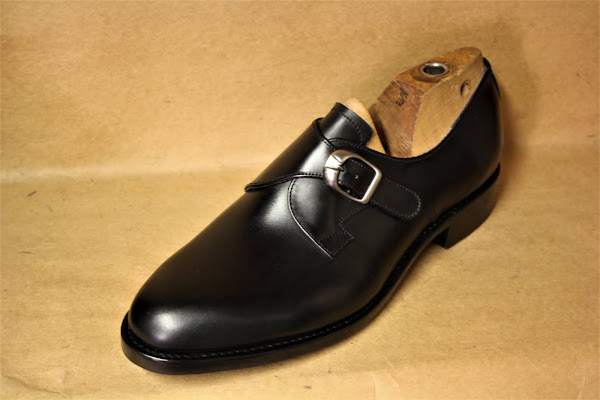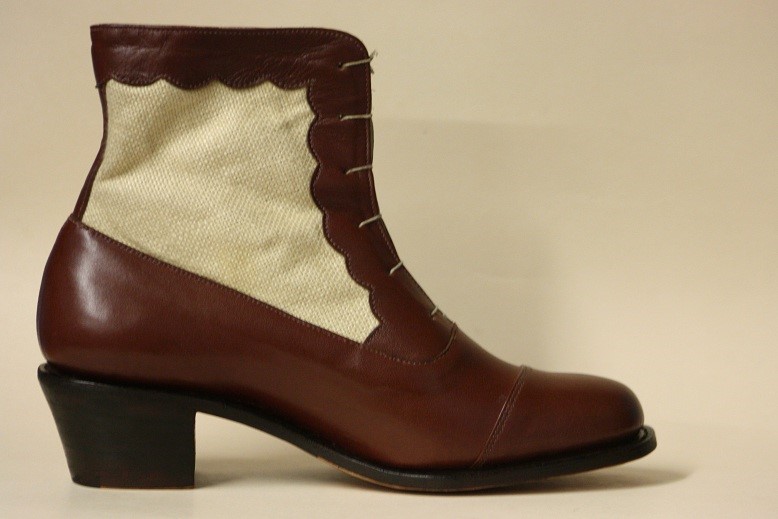We are checking in with our friends in local shoe-related businesses to find out how they got interested in shoes (or socks!), where the journey running a niche business has taken them, and what the future holds in a post COVID19 world.
How did you get interested in shoemaking? When did you start your company Nasser Vies Shoes?
I think the attraction to shoemaking was planted in me when I was nine years old, at the beginning of grade three. One day I skipped school to sit in front of the local shoemaker shop and watched him making shoes for few days, pretending to be at school, until my mother found out by the teacher himself, who happened to live in the neighbourhood. My first encounter with shoemaking lasted a few days. I moved and finished high school, and came to Toronto, Canada 10 or 11 years later from Ahwaz, Iran in 1980. After two years of being in Toronto, shoemaking presented itself to me through the encouragement of a leather worker friend. I started learning how to make shoes, not realizing how difficult it was at first without an instructor. Books were not enough to learn shoemaking. Three years on my own and my progress was slow until I found a shop in the town of Dundas, Ontario where I joined as an apprentice. Sitting across the bench from me was an 85 year old master shoemaker who taught me how to last shoes and boots well. The work was enjoyable, but time consuming. The shoes we made were mostly historical reproductions and live theatrical footwear. When our shop owner decided to move to Nova Scotia, I moved back to Toronto and worked on perfecting my pattern making skills and saved some money to open my first shoemaking shop on the corner of Brunswick Avenue & Ulster Street in 1990.
Tell us more about your company, do you have a team working with you?
I don’t have a team of shoemakers working with me but I have taken apprentices from time to time.
Your website shows that you offer shoemaking courses. What kind of shoe is the most popular with your students?
I started teaching a three week, introductory shoemaking and pattern making course about eight years ago. For beginners, we make a pair of Oxford and a pair of Derby shoes. These are principal designs and most designs are derivatives from them, so they must be learned first. More advanced students can make the shoes of their choice or if they wish to learn one of the bottoming constructions like how to welt. The purpose of the course is to instill the love shoemaking in the students and give them a start they can build on after the course ends.
What challenges have you faced running your business? What is your vision for the company?
There are some challenges facing shoemakers working by hand in Canada nowadays. Looking back, there used to be last making companies, tanning companies and footwear manufacturing companies in Ontario when I first started in the early 80s. With the arrival of the internet, things got a little easier to source leather and tools from faraway places and gave shoemakers the ability to communicate with each other through online forums to share knowledge and resources.
Has your company been affected by COVID-19? Do you plan to make any changes to your business post-COVID?
You asked about the effect of COVID-19, it has been a loss of income for me and a lot of other self-employed people and many others. My first shoemaking course of 2020 was in March and we had to stop after a week. I also had to stop making custom shoes. I need to be close to customers to take their foot measurements and that was not allowed for several months and for good reason. I do stay busy making footwear but it is hard to predict how this will work out. I have to learn to sell ready made products online.
Do you have a favourite shoe that you’ve made? Tell us about it.
My favorite shoe is a hand welted leather shoe. Anything less is not hygienic enough. Feet produce a lot moisture when walking; they perspire or sweat. Leather breathes and allows this perspiration to evaporate. I have made many styles of shoes including golf shoes, cycling shoes, fashion shoes, shoes for movies, shoes for the theatre, historical reproduction shoes, clown shoes, shoes for people with feet issues, dress shoes for everyday functions and more. I am a custom shoemaker. The customers decide what they like to wear and I design and make them to fit their feet. I tried to make every shoe at least once. Every pair is unique; the way it is designed, closed and how it is bottomed. I am a long distance walker and a hobby bird watcher/photographer, I like to wear shoes or ankle boots with hand sewn apron/island on them as they are great when treading on unpaved/uneven surfaces.
What gives you joy and satisfaction in your work?
Shoemaking is a gentle craft; one needs to have a good temper to carry on making shoes. Making shoes the traditional way takes seven years to learn – from taking measurements, preparing the lasts and designing a pattern shoemakers follow 21 specialized steps to create a decent pair of shoes that fits well. Perfection comes with time spent making the product and good teachers.
What gives me the most joy in my work is to see a good pair of shoes finished to the end with no blemish that fits my customer’s feet well, no matter what kind of shoe it is.
Last words, cobblers are not shoemakers and shoemakers are not cobblers.
Thank you so much Nasser for taking the time to answer our questions! To learn more about his company, visit his website here.





